In August last year, Indonesian president Joko “Jokowi” Widodo used his annual state of the nation address to speak a message of national unity.
“Let us revisit the spirit of our Founding Fathers; that Indonesia is not only Jakarta and Java,” he said, wearing ethnic Sasak dress, standing beneath an imposing garuda, Indonesia’s mythic eagle-like national emblem. “Indonesia is all regions in our homeland … the development programmes must be Indonesia centred and serve to benefit all the regions in the archipelago.”
Jokowi’s comments came soon before he announced a $32.7B plan to shift the nation’s capital 1,000km away to the more central location of East Kalimantan. The move has been touted as an attempt to address this “Java-centrism” of the vast archipelago nation, long dominated – politically, economically and culturally – by the current capital Jakarta and Indonesia’s second largest city Surabaya.
While the depth of Indonesia’s inequality is plainly visible in purely economic terms – in Southeast Asia, it is behind only the world’s most unequal nation Thailand, with poverty rates seven times higher in the easternmost Papua province than Jakarta – it’s also manifesting itself in more subtle, but equally pernicious, forms.
Simultaneously described by the Asian Century Institute as a “crisis”, “staggering” by the World Bank, and by activists as the country’s “best-kept secret”, Indonesia is facing a widespread public health issue – it’s raising generations of malnourished and stunted children.
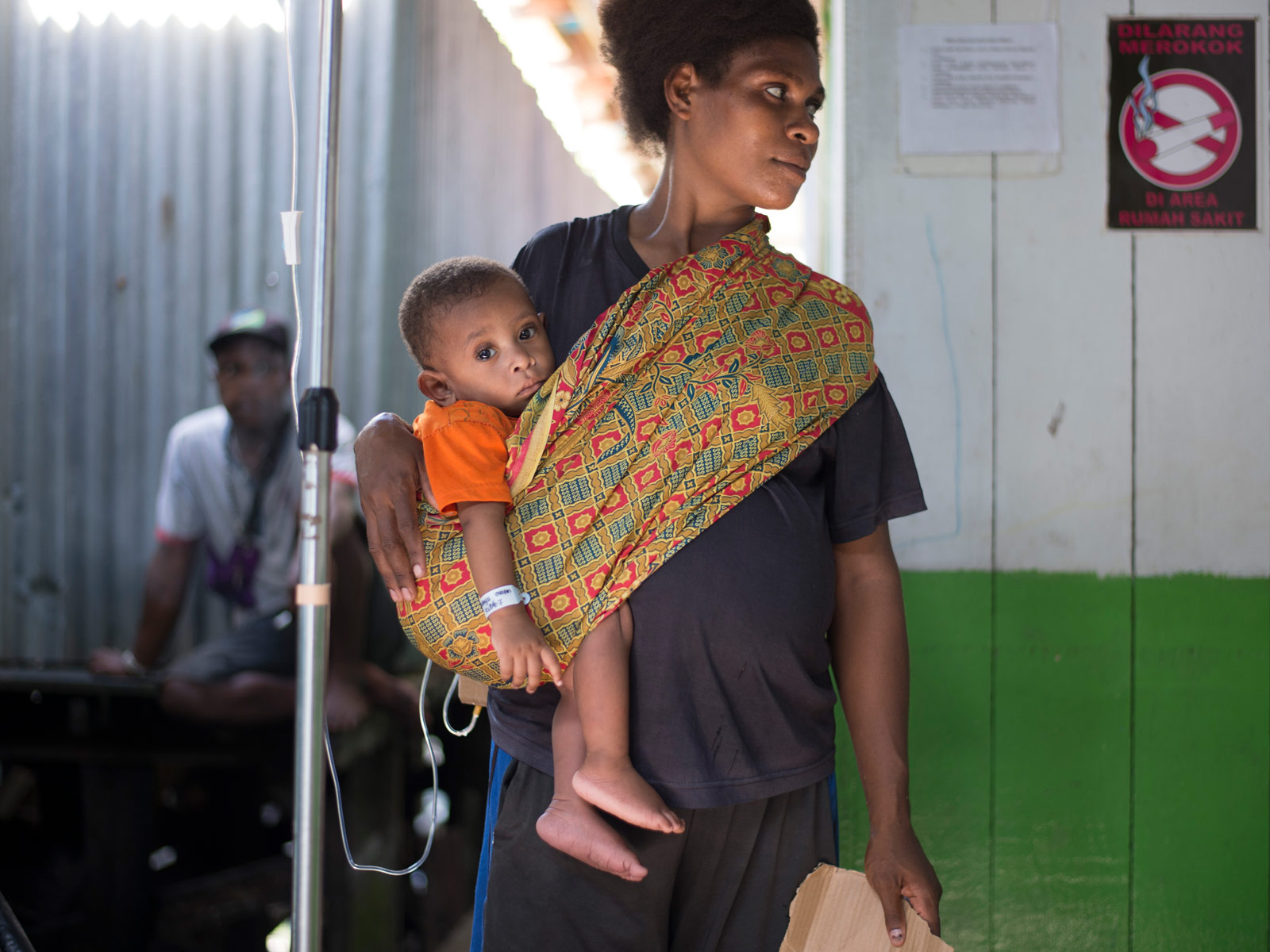
Defined as when a child is below two standard deviations from median height for their age, Indonesia’s national prevalence of stunted children under-five is 36.4% according to the 2018 Global Nutrition Report, more than 10% higher than the developing country average of 25%. The World Bank also described Indonesia in a 2018 report as “among the five countries with the highest number of stunting cases in the world” in terms of sheer numbers, a figure totalling almost eight million children.
The most detrimental effects of stunting includes impaired brain development, while stunted children are also 10 times more susceptible to illness than their healthy peers due to diminished immune systems, resulting in an increased prevalence of deaths from illnesses like pneumonia, diarrhoea, meningitis, tuberculosis and hepatitis.
Moreover, these effects are difficult to reverse once a child reaches the age of two, and so stunted individuals suffer from an estimated 20% reduction in earning capacity over a lifetime, with this ultimately impacting on all aspects of a country’s development – from human resources to economic growth. The World Bank estimates that stunting contributes to overall gross domestic product losses of 4 to 11% across Asia and Africa.
Stunting is also a women’s empowerment issue. When women are informed, empowered and supported to fight stunting the benefits extend to their children, themselves and to society
Valerie Krisni, outreach coordinator for the 1000 Days Fund
Valerie Krisni emphasises these far-reaching economic and social implications associated with stunting, saying that it’s a gendered issue with repercussions that ripple beyond just those immediately impacted.
“Stunting isn’t just a public health issue. It isn’t just a maternal and newborn health issue,” the outreach coordinator for the World Bank-backed 1000 Days Fund tells the Globe. The NGO aims to eradicate stunting in Indonesia by 2030 through training and educational interventions, and owes its name to the 1,000 days between a child’s conception and the age of two, when 80% of human brain growth occurs.
“It’s also a women’s empowerment issue. When women are informed, empowered and supported to fight stunting the benefits extend to their children, themselves and to society.”
While images of severely underweight children in famine-stricken countries presents the most commonly thought of, and alluringly simple, narrative of the link between poverty, poor nutrition and inhibited growth in children, the reality of modern-day stunting in Indonesia is far more nuanced.
Indonesia is classified as a middle-income nation with the world’s 7th largest economy in terms of purchasing power parity, but its stunting rate is higher than war-torn sub-Saharan African nations South Sudan and Somalia. Similarly, only Laos, Southeast Asia’s third poorest nation in terms of GDP per capita, has a higher stunting rate than Indonesia at 43.8% of below-fives.
Dr Ty Beal, a technical specialist for the Global Alliance for Improved Nutrition, emphasises that the link between stunting and poverty is less straightforward than commonly appreciated.
“Vietnam is less prosperous than Indonesia yet has a much lower stunting prevalence [23.8%]. Because the causes of stunting are so numerous and inter-related, it’s difficult to know exactly why Vietnam has a much lower stunting prevalence than Indonesia. We can only speculate,” he said.

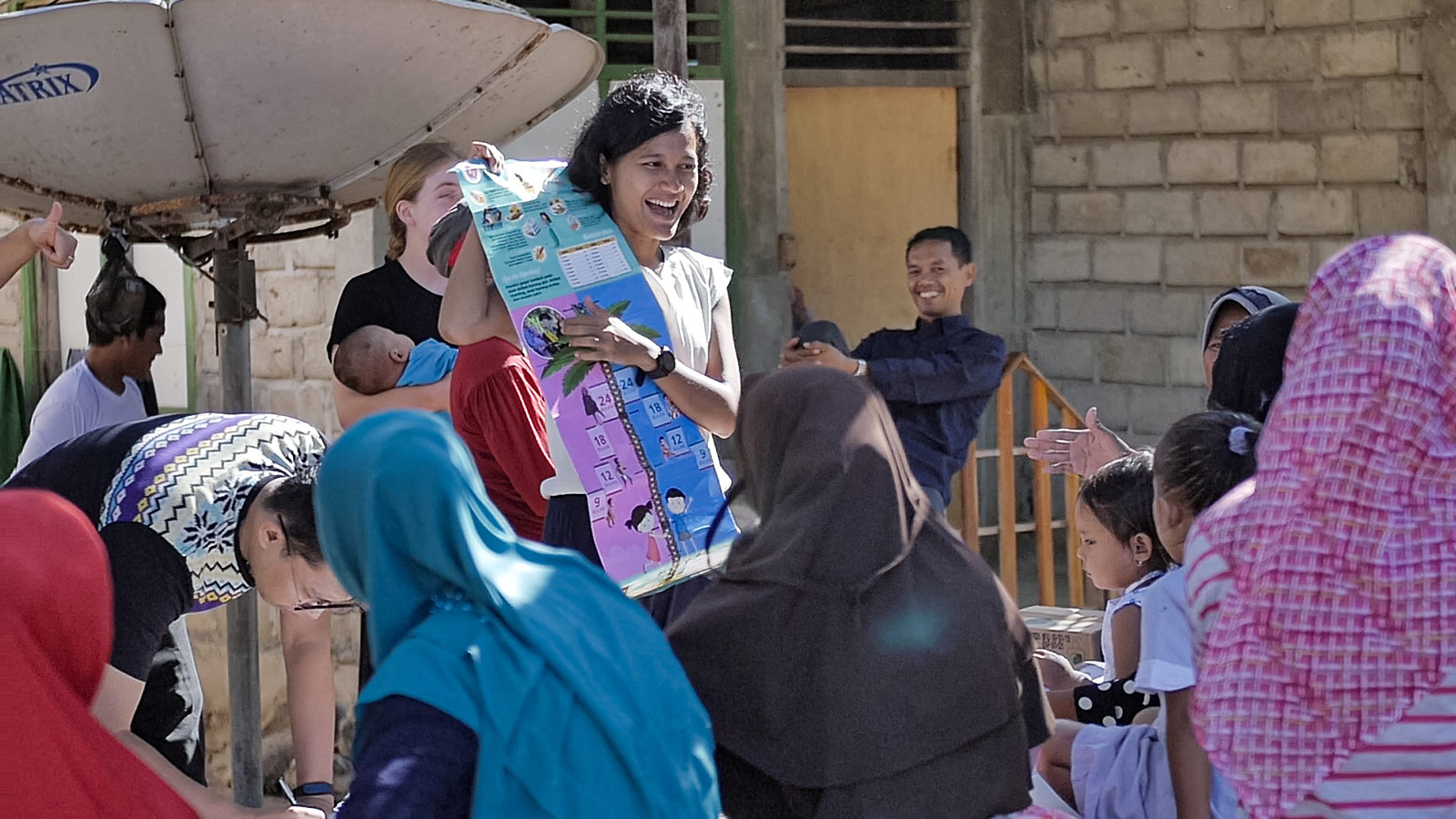
Dr Beal adds that while stunting is sometimes caused by poor nutrition from low-quality diets in modern-day Indonesia, it is repeated infections as a result of poor hygiene – resulting in conditions like diarrhoea and worms – that are among the lesser-understood aggravators of nutritional deficiency.
“If I had to speculate [why Indonesia has a higher rate of stunting that Vietnam], I would say two factors: First, better water, sanitation, and hygiene infrastructure and practices in Vietnam, and secondly, a healthier food system, including more diverse foods, particularly vegetables and animal-source foods, in Vietnam.”
Indeed, education and adequate information around hygiene is an enduring issue in the far reaches of the Indonesian archipelago, with Krisni saying “most people in the bigger cities sterilise baby bottles regularly” while in villages “this is simply not part of reality”. It is this point, improved hygiene and education, as opposed to the more common narrative of tackling poor nutrition, that Krisni emphasises.
“When people think of stunting, they think nutrition. When people think about nutrition, they think about food,” she said. “But the uncomfortable truth is that, it doesn’t matter what you eat, how healthy your diet is, if you have worms or diarrhea, or if you’re sick all the time because you don’t have access to toilets and don’t frequently wash your hands. Those nutrients that your body is supposed to be absorbing are going directly down the drain.”
Krisni sees these education and hygiene issues as exacerbated by – or perhaps the result of – the dual factors of Indonesia’s expansive geography and poorly distributed wealth and resources across the archipelago.
“Indonesia spans from London [the UK] to Tehran [Iran] – some 17,000 islands,” she said. “[And] you don’t need a PhD to understand that wealth creates access [to healthcare and education]. Indonesia is a G20 nation, Southeast Asia’s largest economy. But the reality is that for the 60% of Indonesians who still live in rural and semi-rural settings they are not getting the same access to vital care and information as someone who is living in Jakarta.”
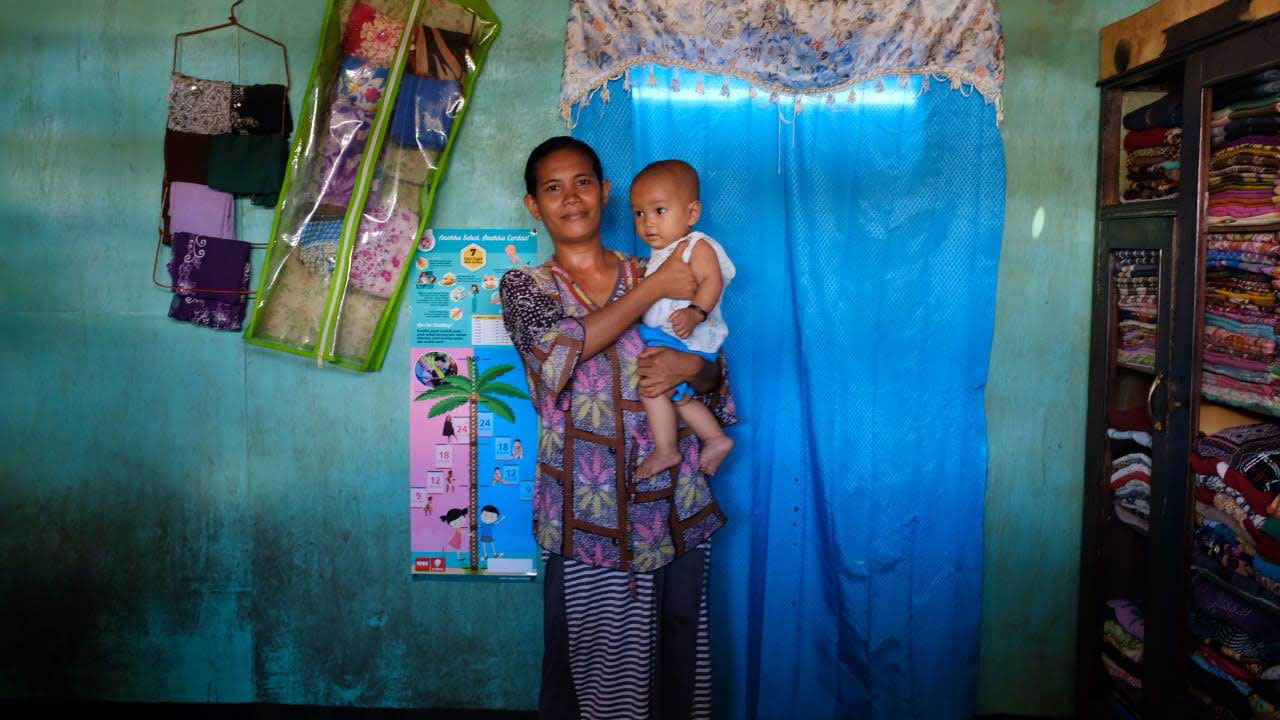
The statistics show that Indonesia’s regional discrepancies in stunting rates are pronounced. As of 2015, the highest rates of stunting were seen in the impoverished province of East Nusa Tenggara, bordering Timor Leste, where more than half the children (52%) are impacted – more than double Jakarta’s stunting rate. While all of the regions with the highest rates of stunting – bar one, South Kalimantan – are located in the east of the country, far from the relatively prosperous and developed conditions enjoyed on Java in the west.
Krisni describes the vast and isolated nature of many of these communities with high stunting rates, most of which have limited access to healthcare facilities and where mothers ride a “bus or a boat for two hours just to go to an antenatal check-up”.
During Indonesia’s April 2019 general election campaign run, Jokowi and his running mate, Ma’ruf Amin, pledged to their commitment to promoting breastfeeding up to age two, as advised by the WHO to improve nutrition in infants.
Meanwhile, his rivals in that election, Prabowo Subianto and running mate Sandiaga Uno of the Great Indonesia Movement Party, promised to address stunting through national movement Sedekah Putih (White Gift), whereby white food like milk and mung beans would be distributed to children in early education.
After years of neglect, the country’s two leading parties incorporating nutrition issues into their political platforms during a national election is emblematic of the increasingly prominent role the issue of child stunting is beginning to take in Indonesia, as it finally begins to enter mainstream discourse.
Following his eventual victory in April’s election, Jokowi renewed this commitment to the issue in July, saying: “Human resource development is Indonesia’s key in the future, and its starting point is to ensure the health of pregnant women, infants, toddlers and school children.” In December, he then publicly committed to cut Indonesia’s “stunting prevalence by 14 percent” by 2024.
Dr Brian Sri Prahastuti, Senior Advisor at Executive Office of The President Republic of Indonesia, highlighted to the Globe the government’s commitment to tackling the issue, saying there are “23 ministries and institutions that have programmes contributing to stunting reduction”.
She added that progress on stunting in Indonesia saw “significant improvement” between 2013 and 2018, with the solution laying in educational initiatives at the local level.
“Stunting is not just about poverty and access to food, but the most important factor is unhealthy behaviour and parenting, particularly related to breastfeeding, child feeding and hygiene practices,” Dr Prahastuti said.
Indeed, research by Indonesia’s Ministry of Health claimed that instances of stunting reduced from 37.2 per cent in 2013 to 30.8 per cent in 2018. While in October, Indonesian Health Minister Nila Moeloek stated that the rate had been further reduced to 27.7% in 2019.
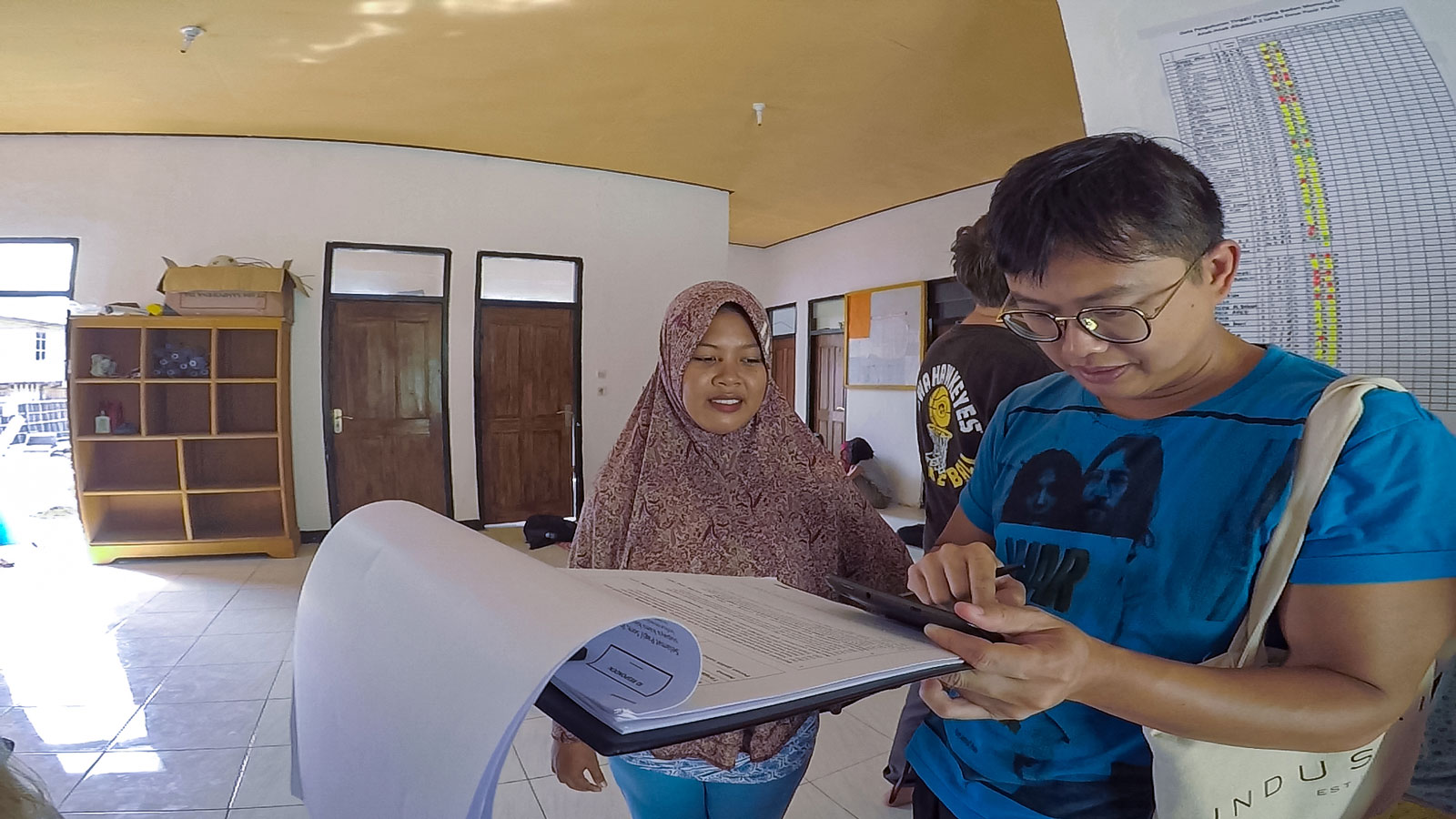
While a downward trend is generally accepted, these statistics remain a source of debate, and stand in contrast to external estimates such as the aforementioned 2018 Global Nutrition Report’s rate of 36.4%.
Dr Beal, for his part, said that while child stunting in Indonesia is a problem that has remained stubbornly “high for decades” and only “slightly declined in the past few years”, he recognises that the government is now taking the issue seriously.
“Recent concerted efforts by the Indonesian government and civil society have great potential to substantially reduce stunting over the next few years,” he said.
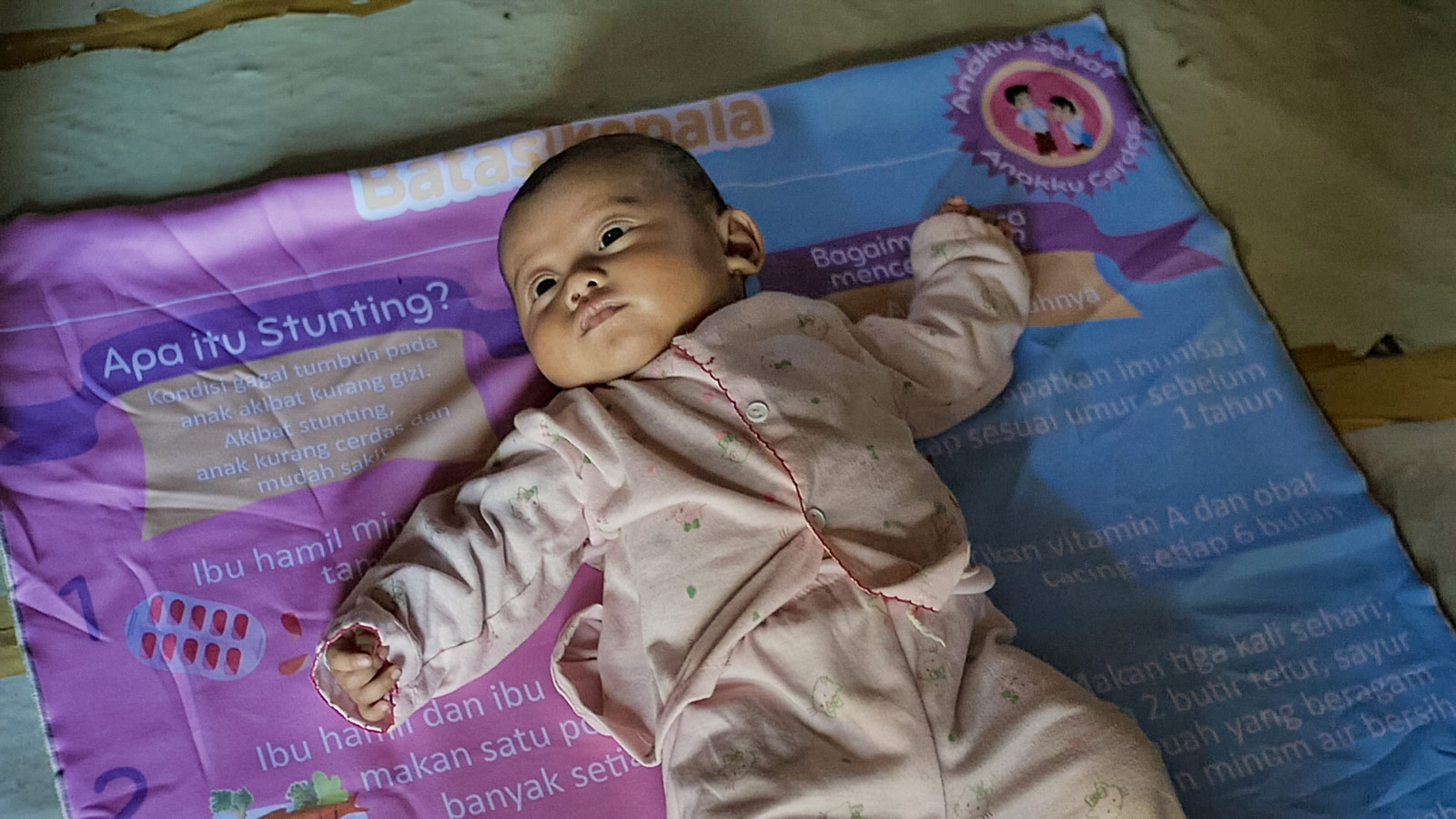
Krisni sees the solution as laying in investing in the vast network of Indonesian women working as community health volunteers, known as kaders, across the archipelago.
Kaders emerged in the 1970s as part of the Family Welfare Movement and are tasked with conducting health and nutrition promotion activities in each village at community health posts called posyandu. Despite their vital role as among the only health workers accessible to remote communities, the “overwhelming majority” of kader have never been trained, according to Krisni.
“There are 1,500,000 of these people [kaders] across Indonesia, who wake up in the morning to do work that they barely get paid for, out of sincerity and willingness to learn and help their communities be healthy and happy,” she said. “We believe that they deserve all the assistance that they need in order to do their work better, and the appreciation and recognition.”
This, inevitably, comes back to addressing Indonesia’s enduring issue of “Java-centrism”. Krisni wants to see more power placed in the hands of kader at the grassroots level, decentralising from the mostly male politicians and bureaucrats sitting in Jakarta who, she said, remain divorced from the reality of life in the eastern provinces.
“When women are in positions of power, priorities change for the better. That is why we are leading the push to turn kaders into village and sub-village level 1 leaders,” she said. “Why should men, who rarely, if ever, visit posyandu be making decisions regarding the budgetary decisions for a place they’ve never been a part of?”


